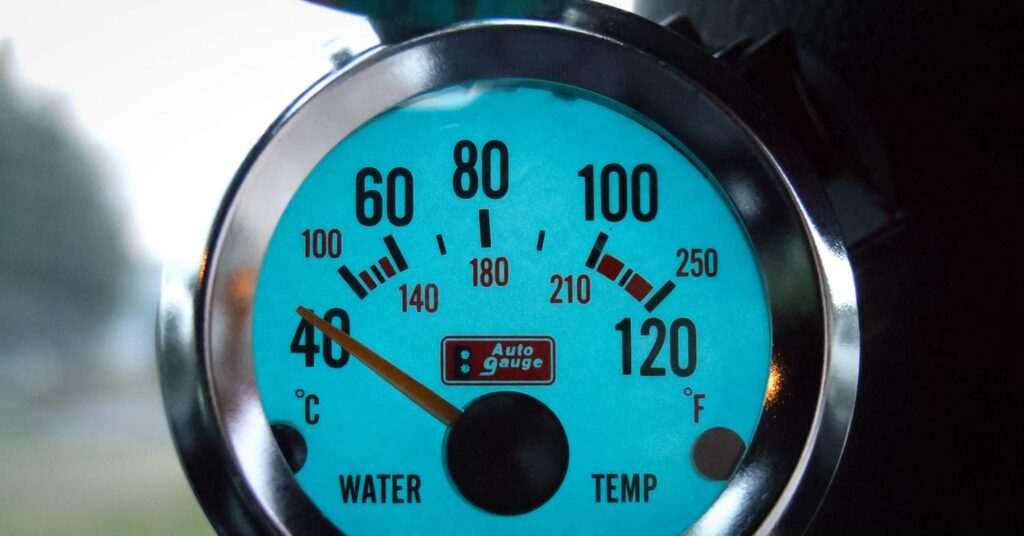If you’re noticing unusual behavior from your water temperature gauge, chances are it’s not working the way it should. Keeping tabs on your engine’s temperature is crucial for safety. If the gauge fails, it may lead to overheating without warning, and we all know what that can mean for your engine.
1. What Does a Water Temperature Gauge Do?
The water temperature gauge keeps you informed about your car’s engine temperature. When it’s functioning properly, it shows whether the engine is within safe operating temperatures. If the gauge is off, you might not know if your engine’s running too hot or too cold. Engine overheating can cause serious damage, including warped cylinder heads or blown head gaskets. It’s essential to identify if the gauge is faulty.
2. Signs Your Water Temperature Gauge Is Faulty
Sometimes it’s obvious, other times not so much. Let’s break it down:
- Fluctuating readings: If you see the needle bouncing around without any reason, it’s a sign that the gauge or its connections are malfunctioning. Temperature shouldn’t fluctuate unless you’ve driven a very short distance or the engine’s been running hard.
- Constant low reading: If the gauge is always showing a low temperature, even after the car has been running for a while, the gauge might be stuck or defective. You want the needle to rise once the engine warms up. If not, either the thermostat is stuck open, or the gauge is broken.
- Constant high reading: If the gauge is permanently pointing towards hot, even though the engine feels normal and you’re not experiencing performance issues, there could be an issue with the gauge or the temperature sensor. Overheating consistently without other symptoms isn’t likely.
- No movement at all: If your temperature gauge doesn’t move at all, it’s a clear signal that something’s wrong. It could be a blown fuse, bad wiring, or a gauge that’s just given up.
3. Possible Causes for Gauge Failure
Water temperature gauges can fail for a variety of reasons, and it’s important to troubleshoot effectively.
- Bad sensor (coolant temperature sensor): The most common reason for a bad reading is a faulty sensor. The sensor relays information to the gauge, and if it’s malfunctioning, you’ll get wrong readings. It’s easy to replace and fairly inexpensive.
- Electrical issues: Wires connecting the gauge and the sensor can wear down over time. Faulty wiring can lead to inaccurate or no readings at all. Look for frayed or corroded wires, especially around connectors.
- Fuse problems: Sometimes it’s a blown fuse causing the gauge to malfunction. Check your vehicle’s fuse box for any that might have popped.
- Grounding issues: A bad ground wire can mess with any electrical component in your car, including the temperature gauge. Make sure the ground connections are tight and free of rust.
4. How to Test a Faulty Water Temperature Gauge
Testing your water temperature gauge isn’t that complicated, but you’ll need a few tools. Start by inspecting the wiring and fuses. You can use a multimeter to check for voltage at the sensor. If there’s no reading, you likely have a wiring issue. If the voltage checks out, then the sensor or gauge could be the culprit.
You can also test the gauge itself by using a thermometer to measure your engine’s actual temperature and compare it to what’s being displayed. If the two numbers are far off, it’s probably time to replace the gauge or sensor.
5. Consequences of Ignoring a Bad Water Temperature Gauge
Ignoring a faulty water temperature gauge can have serious consequences. Without accurate readings, you won’t know if your engine is overheating until it’s too late. An overheated engine can lead to expensive repairs, like blown head gaskets or even complete engine failure.
Overheating is a common cause of roadside breakdowns. Failing to catch an overheating issue early could leave you stranded, costing you more in repairs and towing fees.
6. When to Replace the Water Temperature Gauge
If you’ve tested everything—wiring, fuses, and sensors—and the gauge is still giving you trouble, it’s time to replace it. Replacing the gauge isn’t usually a major repair, but it’s one that needs to be done before the engine suffers.
Look for a replacement gauge that’s compatible with your car’s make and model. Consult your vehicle’s manual or ask a professional to help you choose the right one.
7. Cost of Repair and Replacement
Replacing a coolant temperature sensor generally costs between $150 and $300, depending on the make of your vehicle. The cost for replacing the water temperature gauge itself can vary based on labor and parts, but typically, it’s within a similar price range. Doing it yourself? You could save quite a bit on labor.
Make sure to use only parts recommended by your car’s manufacturer. Avoid cheaper, off-brand sensors and gauges, which may be more likely to fail prematurely.
8. Maintenance Tips to Prevent Issues with Your Water Temperature Gauge
Regular vehicle maintenance is the best way to prevent problems with your water temperature gauge.
- Check coolant levels regularly. Low coolant can lead to overheating, which puts strain on the sensor and the gauge.
- Inspect wiring. Keep an eye out for frayed or corroded wires. Replace them as soon as possible to avoid inaccurate readings.
- Flush your coolant system every few years. Buildup and debris can affect sensor performance.
Regular coolant system maintenance can improve vehicle performance and increase its lifespan.
Conclusion
Your water temperature gauge plays a crucial role in keeping your engine safe from overheating. If you notice unusual readings, don’t ignore them. From faulty wiring to a bad coolant temperature sensor, there are several reasons your gauge may not be working. By understanding the warning signs, causes, and repair options, you can address the issue before it leads to more significant engine damage. Regular maintenance and timely repairs will keep your car running smoothly and save you money down the line.

